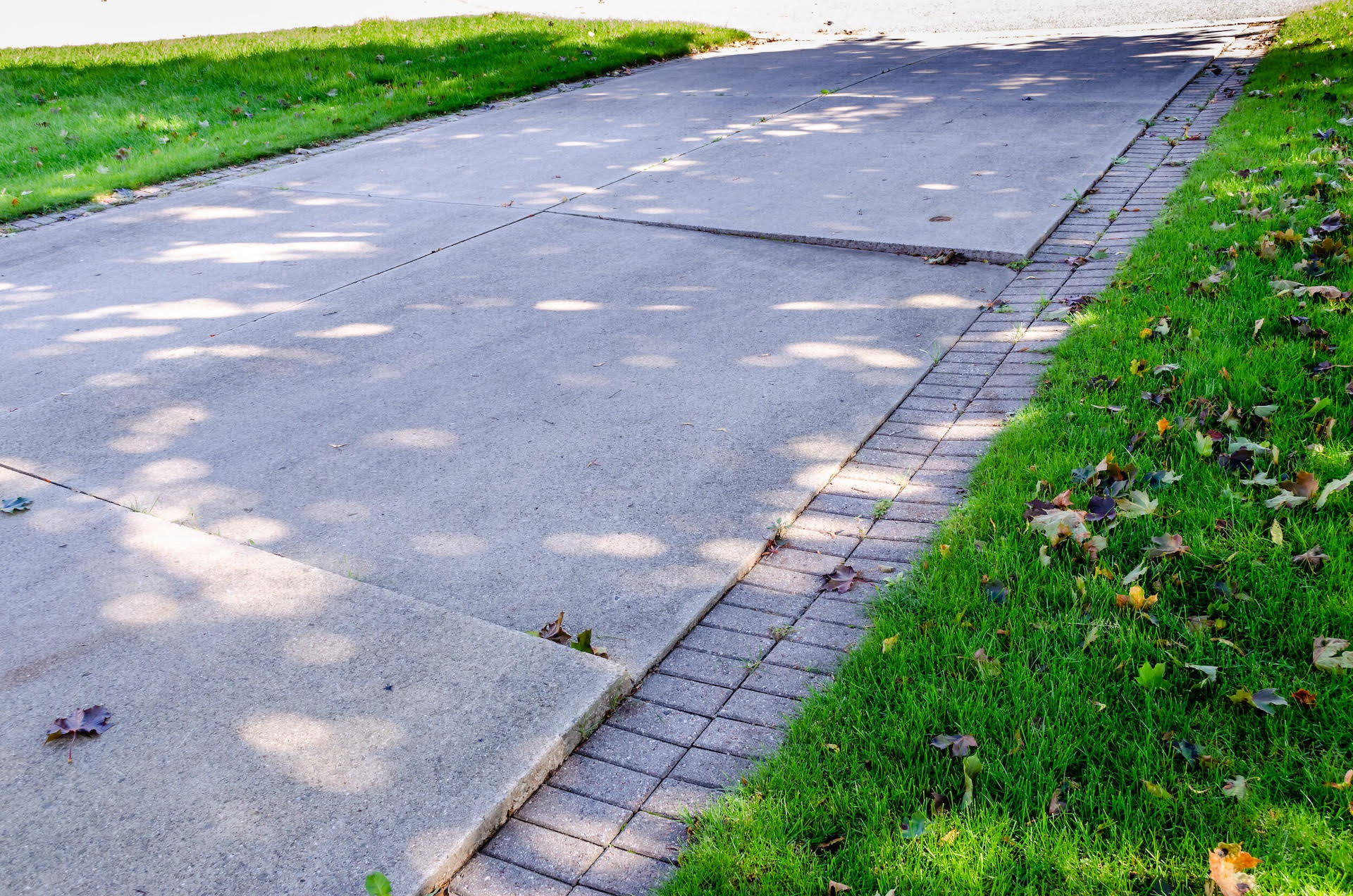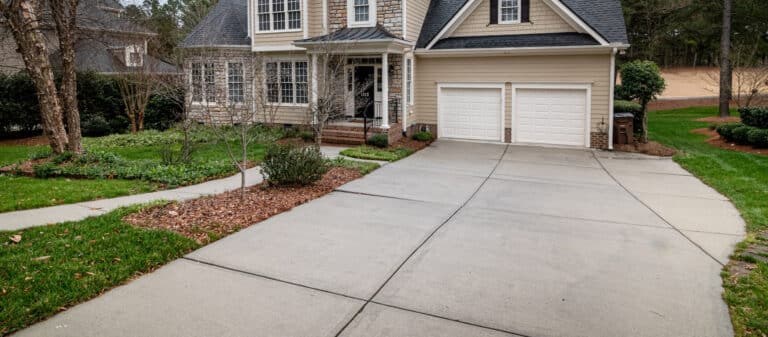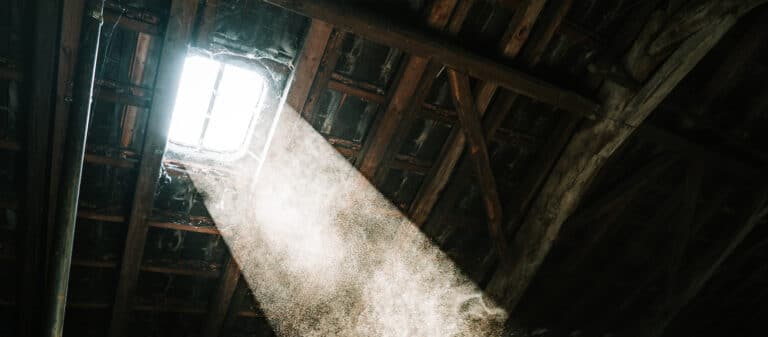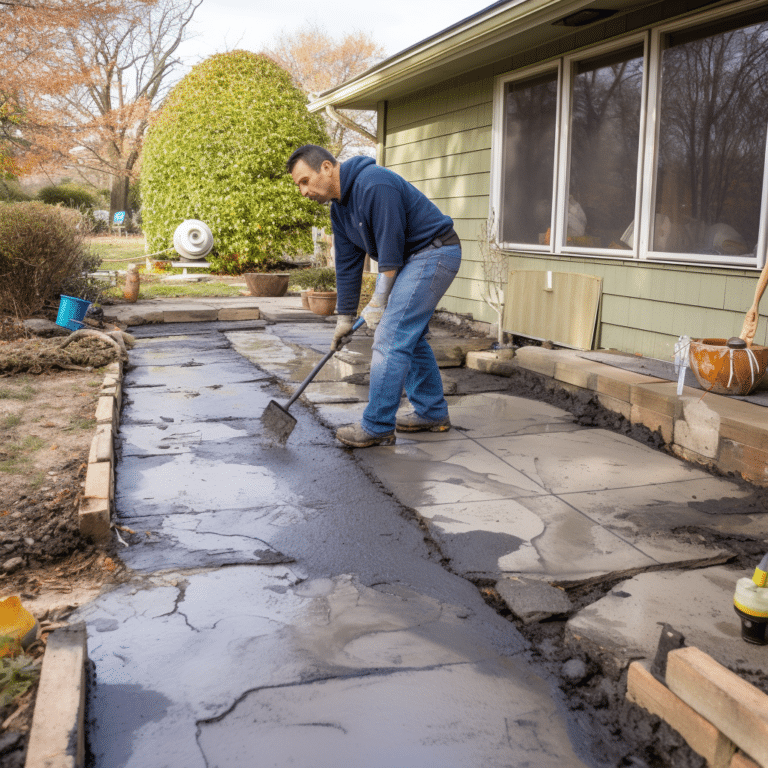Concrete repair is often seen as a grudge purchase, as many homeowners are reluctant to repair anything that’s not directly connected to their house.
However, damaged concrete can be a serious hazard for pedestrians and diminish the curbside appeal of your home.
One quick and affordable solution is to level the concrete and return the slab to its original form. Unfortunately, there are many companies that offer a haphazard solution known as mudjacking, which tends to take advantage of homeowners’ reluctance to repair their concrete by offering low prices for repair.
What most homeowners find out is that not only is mudjacking a very short-term solution (lasting only 3-5 years on average), but it can actually weaken the integrity of concrete and require replacement sooner than if other options were explored.
We’ll discuss why mud jacking is a bad choice for your home and why it doesn’t save you money. Plus, we’ll discuss what better options exist for long-lasting concrete leveling.


Causes of Uneven Concrete
Modern concrete typically only lasts between 50-100 years under ideal conditions. However, multiple forces exert pressure on concrete at any given time, which can quickly diminish its lifespan. Examples include:- Soil Erosion: Water can wash away soil beneath concrete slabs, leading to voids and uneven surfaces.
- Compaction: Over time, the soil under the concrete can compact and settle, causing the concrete to sink.
- Tree Roots: Expanding tree roots can push concrete up, creating uneven surfaces.
- Water Damage: Excessive moisture can weaken the soil and lead to sinking concrete.

What Is Mudjacking?
Mudjacking, also known as slabjacking, is a process used to lift and level concrete slabs using a special slurry or concrete mixture. The slurry typically contains many natural elements, including sand, clay, topsoil, limestone, and other additives. Some contractors Perhaps one of the most inefficient elements of mudjacking is installing the slurry itself. Holes must be drilled into the concrete, and potentially hundreds of pounds of slurry must be pumped beneath the slab to fill any voids and lift it. With very little control over how the slurry is installed, achieving a truly even surface is challenging.7 Reasons Why Mudjacking Is a Poor Solution
Unfortunately, mudjacking is marketed as a cheap, long-term solution for concrete repair, but most customers find this to be untrue.1. Mudjacking Isn’t a Long-Term Solution
One of the biggest drawbacks of mudjacking is its lack of longevity. The slurry used in mudjacking is prone to erosion and compaction over time, leading to the same issues that caused the concrete to sink in the first place. This means you might face the same problems again in a few years. By most estimates, mudjacking is only guaranteed to last between 3-5 years.2. Mudjacking Can Damage Concrete
Ironically, the process of drilling holes and pumping slurry under high pressure can potentially damage the concrete slab, weakening its structural integrity. Over time, this could actually accelerate the process of requiring the replacement of the entire slab.3. The Slurry Isn’t Waterproof
One of the primary issues with concrete slurry is that it is vulnerable to erosion from water and can potentially cause the slab to sink. Most customers who invest in mudjacking may notice loose, sunken, or cracked concrete after a significant rain event.4. Mudjacking Can Damage Utilities
Unlike other concrete leveling methods, which naturally expand to fill voids, mudjacking forcibly fills voids using heavy materials at high pressures. This can damage underground utilities that run under concrete, including water, gas, and drainage pipes, and require costly repair.5. Mudjacking Isn’t Eco-Friendly
The slurry used in mudjacking is typically a mix of soil, water, and cement. The extraction and processing of these materials can have a significant environmental impact. Additionally, the need for repeated applications due to the method’s short lifespan means more resources are consumed over time.6. Mudjacking Does Not Look Good
The holes drilled into the concrete for the injection process are often visible even after the procedure is completed. This can detract from the appearance of your property and may not be acceptable if you’re looking for a seamless finish.7. Mudjacking Doesn’t Guarantee An Even Surface
Despite its intent, mudjacking does not always result in a perfectly level surface. The uneven distribution of the slurry and the varying conditions of the underlying soil can cause the concrete to remain uneven or settle unevenly after the process. As we’ve demonstrated, the temporary nature of mudjacking can lead to uneven concrete in as little as 3-5 years, begging the question: Why would you invest in mudjacking when better alternatives exist?
Why Polyjacking Is a Superior Solution
On the contrary, polyjacking offers a much longer-term and equally affordable solution to mudjacking. Polyjacking, also known as polyurethane foam injection, uses a high-density polyurethane foam that naturally expands once it’s injected under the concrete slab. Once the foam expands, it hardens and fills voids without damaging anything underneath the slab. The advantages of polyjacking include:- Durability: Polyurethane foam is more resistant to erosion and water damage, providing a longer-lasting solution (20-50 years at a minimum).
- Minimal Disruption: The injection holes are smaller, reducing the risk of visible damage and maintaining the concrete’s aesthetics.
- Waterproof: Polyurethane foam is waterproof, preventing water infiltration and further soil erosion.
- Lightweight: The foam is much lighter than the slurry used in mudjacking, reducing the burden on the soil and decreasing the likelihood of future settling.
- Eco-Friendly: Polyjacking uses less material and has a smaller environmental footprint compared to mudjacking.
- Quick and Efficient: The foam cures quickly, allowing the concrete to be used soon after the procedure. In fact, polyjacking can even be completed in as little as a few hours.










